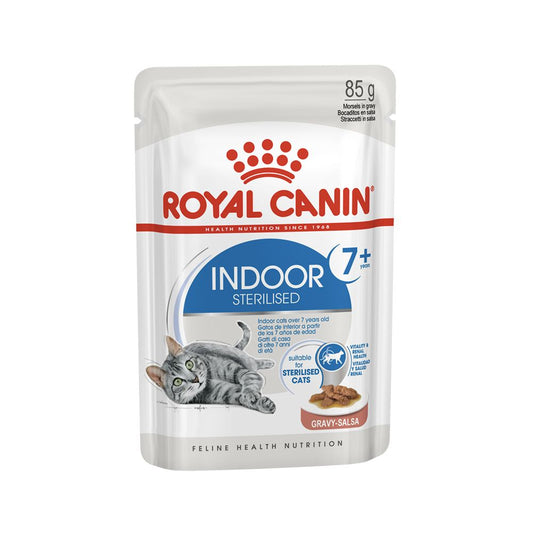Learning about your cat’s pregnancy can be thrilling yet scary. Although all cats are capable of taking care of themselves during labour, there are ways that you can help them out.
The owner should know about potential problems during this time and how to solve them. If your cat has been in labour for 3 - 4 hours without any kittens on site, it might be time to call for the vet.
In this blog, we will discuss how to help your cat give birth and the danger signs you should look out for. Additionally, we will suggest key points to ensure your cat’s comfort like a quiet and warm room, nesting box, etc.
Before anything else, learn, how to prepare for your cat going into labour. Are you ready to become a grandparent already?
Let's begin!
|
Table of Contents |
|
Signs Your Cat is in Labour:
Cats' pregnancies are 2 months or 65 days long, give or take 5 days. Most cats prefer to give birth in privacy and therefore, might sneak away and randomly appear with your grandkids (kittens) one day. Therefore, if your cat is pregnant, you must keep a close eye on them during the final weeks.

Here are a few telltale signs that might indicate your cat’s pregnancy:
Nesting:
Cats, like other animals, tend to build a nest that is warm and safe for their new kittens to thrive in. Your cat will isolate itself and seek out a dark and safe corner for nesting a day or two before the birth. She will probably choose her favourite spot for the birth, or where you make her bed. Additionally, she might make it cosy with her favourite blanket or toy.

Behavioural Changes:
Due to the uncomfort during pregnancy, and hormonal imbalance, your cat can have behavioural changes. The Queen will become rather restless and will begin pacing and panting. She may also take to excessive grooming and vocalization, and she will stop eating.
Physical Changes:
Certain physical changes that you might notice in your cat are reduced body temperature (below 99 degrees Fahrenheit) and vomiting. Additionally, her abdomen might ‘drop’ and her nipples might appear larger, and more pink.
Labour Signs:
Check for contractions in your cat and a red discharge from the vagina. Following this, you should soon be able to see the kitten being pushed out, and their placentas appearing. Cats generally give birth an hour after going into labour.
Cats are capable of giving birth completely on their own, however, you can take a few precautionary steps to ensure their comfort and safety.
Preparations for Birth:
If you can’t find your pregnant cat all of a sudden, don’t panic. Cats often hide (yes, even from their owners) to give birth. Yet, here are a few things you can do to make her journey to being a new mom easier:
1. Birthing Area:
- Choose a quiet and dark room with limited human and pet intervention, and set up a few warm blankets for your cat to use as her birthing area.
- Make sure the nesting materials are easy to wash, and occasionally change them with clean towels.
2. Gather Supplies:
- Towels and blankets for the nesting area.
- Clean, disposable gloves for you.
- Sterile scissors to cut the umbilical cords (if necessary).
- Dental floss or clean thread for tying off the umbilical cords.
- A heating pad or hot water bottle to maintain a warm environment for the kittens.
- Kitten-friendly heating pads or heat lamps (consult with your veterinarian).
3. Food and Water:
- Ensure the mother has access to fresh water and high-quality food during and after labour.
- Some cats may lose their appetite during labour, so be sure to monitor her closely. If she has stopped feeding for days, consult your veterinarian.
4. Quiet Observation:
- Once labour begins, observe the cat from a distance to minimize stress. Cats often prefer privacy during this time.
- Be present during the birth to offer support, but avoid unnecessary interference. Monitor the process and assist only if needed.
5. Post-Birth Care:
- Prepare for the aftercare of the mother and kittens. This includes monitoring the queen, ensuring the kittens are nursing and staying warm, and providing a clean environment.
Regardless of every precaution, there might be problems which you should look out for.

Problems to Look Out for:
The process of birthing kittens can be long and tough, here are a few things you should monitor to avoid issues during cat birth.
1. Prolonged Labor:
If your cat has been in labour for more than 24 hours without producing kittens, there may be a problem. Prolonged labour can lead to exhaustion and distress for both the mother and kittens. It is advisable to visit your vet immediately.
2. Difficult Birth (Dystocia):
Dystocia refers to difficult or obstructed labour. This occurs if a kitten is too large to pass through the birth canal or if there are abnormalities in the birthing process.
3. Straining Without Progress:
If the cat is straining and no kittens are being born, there may be an issue. This could indicate a blockage, malpositioned kittens, or other complications.
4. Green Discharge:
A green discharge (meconium) before the first kitten is born may suggest distress and veterinary assistance is needed.
5. Excessive Bleeding:
If the cat is experiencing heavy bleeding during or after delivery, it may indicate a problem with the placenta or other complications.
FAQ: How to Help a Cat Give Birth - 5 Ways
How long does cat labour last?
Most cats are in labour for 12 - 24 hours, however, it can vary from one cat to another depending on health issues and age. If it extends beyond 24 hours without progress, it is advisable to consult a vet.
Do mother cats reject their kittens if humans touch them?
Mother cats usually don't reject kittens due to human scent. However, excessive handling might stress them, so do not handle them frequently post-birth.
Why is my cat lying on her kitten?
Mother cats lie on their kittens for warmth, comfort, and protection. It's a natural behaviour. They do this to ensure the well-being of their kittens.
What do you feed newborn kittens?
Feed newborn kittens a specialized kitten milk that is rich in nutrition replacer every 2-3 hours. Gradually transition to quality kitten food after four weeks, consulting your vet for guidance.
Conclusion:
Understanding the signs of cat labour and making thoughtful preparations can ensure a smooth delivery for your feline friend. By following these, you can contribute to your cat's comfort and the well-being of the kittens.
Recognizing potential problems, such as prolonged labour or difficult birth, prompts timely veterinary intervention. Remember, while cats are capable of giving birth independently, your supportive presence is valuable.
For comprehensive guidance on cat care, including expert advice and quality products, explore Maryam's Pet – your trusted partner in ensuring a safe and joyful journey of helping a cat give birth.






